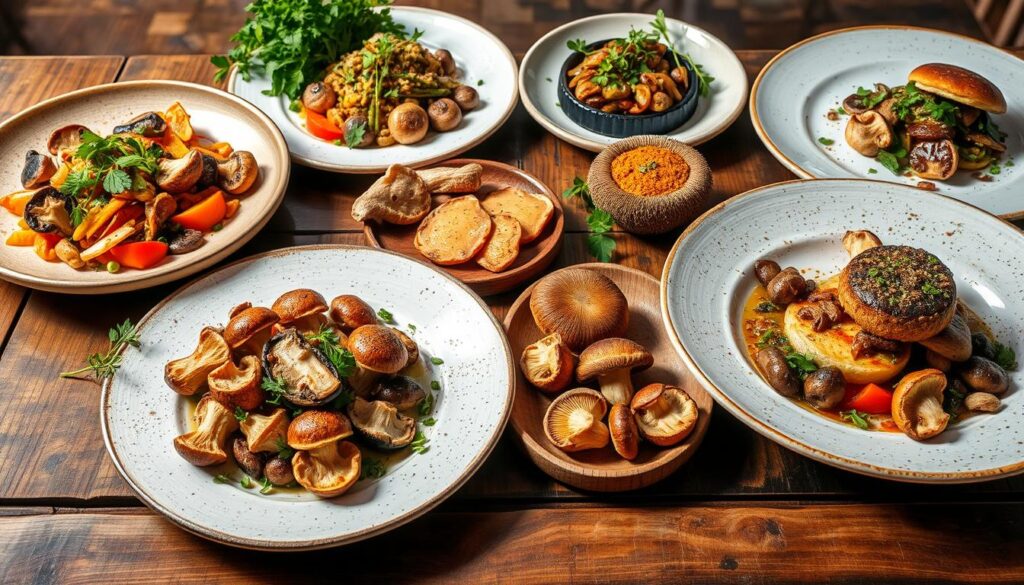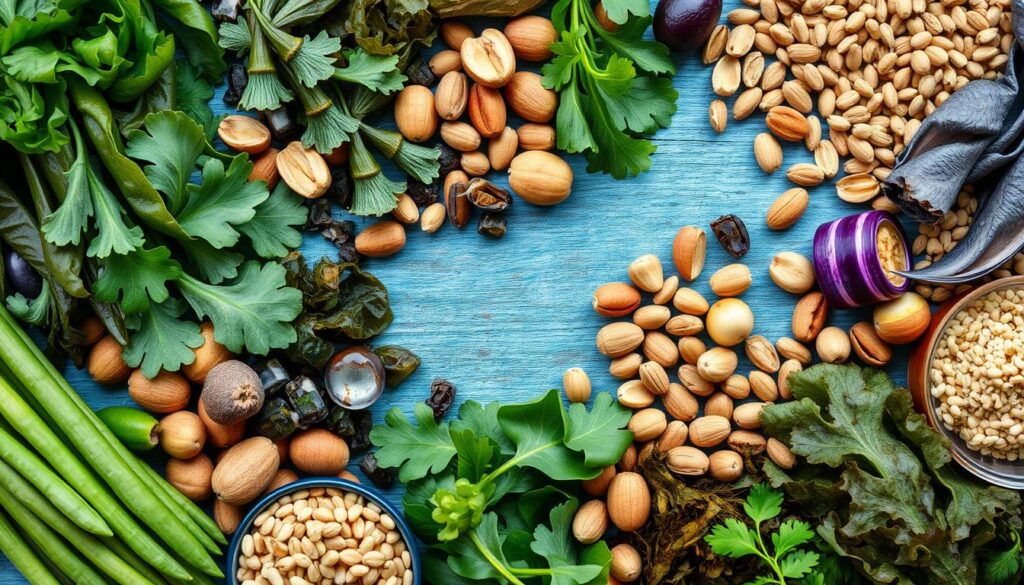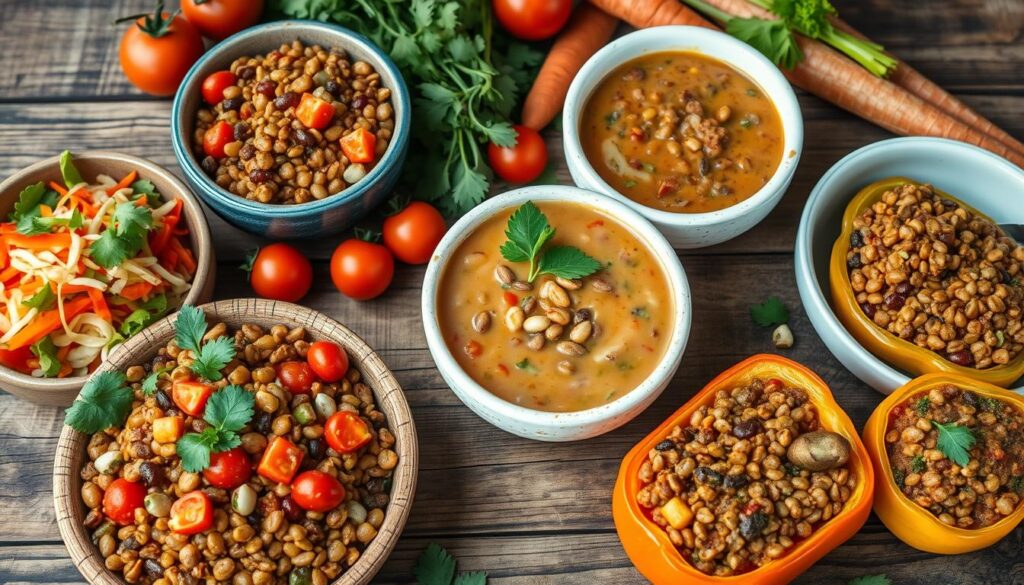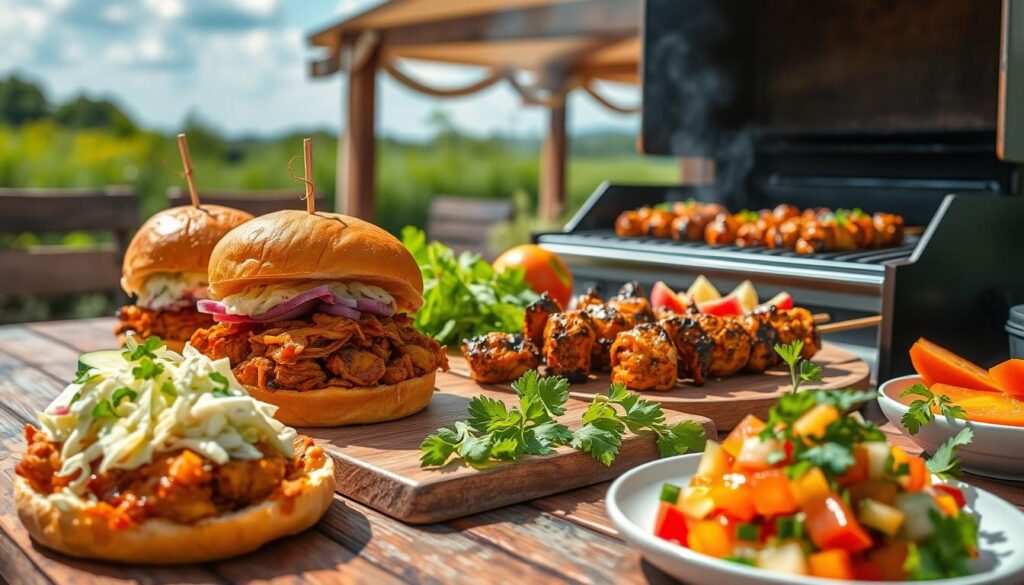As you sit down to enjoy a meal, have you ever paused to reflect on the journey each ingredient has taken to reach your plate? In 2023, culinary trends are not just about flavors; they are about a deeper connection between food, culture, and sustainability. You might find that the latest food technology trends are shaping not only what you eat but also how you feel about food itself. As our tastes evolve and the world faces significant challenges, the food industry is responding with innovative approaches that inspire culinary enthusiasts and professionals alike.
Whether you’re a passionate home cook or a budding restaurateur, these food industry updates are your gateway to understanding the transformative power of ingredients and dining concepts. Join us as we dive into the most exciting latest food trends that promise to redefine your dining experiences and keep you ahead in this competitive landscape. Let’s discover how these shifts in eating habits align with our collective desire for healthier, sustainable, and more adventurous meals.
Key Takeaways
- Cashew market growth projected at 5.3% over the next few years.
- Lentils have a negative carbon footprint and promote soil health.
- Plant-based restaurants are gaining popularity, especially among food connoisseurs.
- Urban produce uses up to 98% less water than traditional farming methods.
- One in four Americans identify as flexitarian, reflecting a shift towards plant-based eating.
Introduction to Culinary Trends
Understanding culinary trends is essential for anyone with a stake in the food scene. Whether a chef, restaurant owner, or food enthusiast, awareness of these trends enhances your culinary experiences. In 2023, the spotlight shines on the plant-based movement, where innovative fusion dishes capture consumer interest. The integration of technology marks a significant change, with solutions such as QR code menus offering seamless ordering and payments.
Visual appeal also plays a critical role. Customers gravitate towards Instagrammable menu items, prompting chefs to emphasize vibrant colors and unique presentations. This focus on aesthetics aligns with broader culinary industry trends, where hyper-local sourcing fosters transparency and traceability in food origins. Sustainability is not just a buzzword; zero-waste cooking techniques, including nose-to-tail and root-to-stem cooking, are gaining traction.
Customization drives consumer demand as patrons look for personalized dining experiences that address specific dietary needs and flavor preferences. Restaurants now explore interactive solutions that enhance the dining experience, utilizing smart menu options for detailed ingredient descriptions and suggested pairings. This technology not only caters to those with dietary restrictions, but also allows for the creation of sophisticated flavor profiles tailored to individual preferences. Customization has become a driving force in the restaurant industry, as consumers seek out unique and memorable dining experiences that cater to their specific tastes and needs. As a result, restaurants that offer personalized menu options and interactive dining experiences are able to differentiate themselves in a competitive market.

The rise of virtual cooking classes signifies another noteworthy shift, delivering culinary education globally through social media platforms. The emergence of avant-garde techniques, such as spherification and foaming, showcases gastronomy advancements that challenge traditional methods and delight diners with stunning presentations.
Overall, staying abreast of restaurant innovations and changing consumer preferences offers vital insights into navigating the dynamic culinary landscape. As trends evolve, being aware of these shifts empowers you to enhance your culinary journey.
Mighty Mushrooms: The Ingredient of the Year
Mushrooms are undeniably a highlight of 2023, with their rising fame as the “Ingredient of the Year.” With a remarkable ability to enhance a variety of dishes, mushrooms inspire a new realm of culinary creativity. The Mushroom Council reports an average production and importation of over 500,000 pounds of mushrooms annually, showcasing their significance in both domestic and international cuisine.
Expect to see a surge in mushroom recipes that cater to all tastes, from hearty quesadillas to rich lasagna. Specialty varieties, such as Lion’s Mane, are anticipated to capture attention this year. As you explore the exciting world of plant-based cooking, mushrooms serve as an excellent alternative with high amino acid content, making them a fantastic substitute for traditional proteins.
The recent trend of mushroom cocktails is gaining traction, particularly in the fall and winter months, ideal for warming up social gatherings. This innovative idea encourages unique flavor pairings while appealing to those interested in the growing interest surrounding mushroom snacks.

As mushroom consumption solidifies as a plant-based superfood, culinary trends are pushing for more mushroom-centric menus in restaurants and home kitchens. The Mushroom Council’s Mushroom Monday initiative has shown great promise, driving fresh mushroom awareness across the nation. Media outlets and culinary influencers actively spotlight fresh mushrooms as a food trend across platforms.
| Mushroom Variety | Popularity Trend in 2023 | Mushroom Applications |
|---|---|---|
| Lion’s Mane | Gaining traction | Used in snacks and cocktails |
| Specialty Mushrooms | Continued growth | Culinary dishes and beverages |
| Common Varieties | Increased consumption | Quesadillas, lasagna, and more |
The versatility of mushrooms promises to influence numerous culinary applications throughout the year. With robust flavors and emerging trends, enjoy the journey that mushrooms take you on in your kitchen. Embracing these culinary trends opens up endless creative possibilities and will satisfy a wide range of palates.
Discovering the Umami of Seaweed
Seaweed has emerged as a remarkable ingredient, celebrated for its rich umami flavor and numerous health advantages. This powerhouse of sustainable ingredients not only enhances the taste of dishes but also offers various seaweed health benefits that appeal to health-conscious consumers. Embracing this culinary trend can add depth to your meals while supporting a more sustainable food system.
Health Benefits of Seaweed
Incorporating seaweed into your diet introduces a wide range of health benefits. This versatile superfood is packed with essential nutrients, including proteins, vitamins, and minerals. It’s particularly rich in iodine, which supports thyroid function, and contains antioxidants that can help combat oxidative stress. Regular consumption may even contribute to better digestion and improved gut health.
Beyond its nutritional profile, seaweed can impact your dietary habits positively. Studies indicate that the umami flavor from seaweed, particularly from varieties like kombu, can enhance flavors in low-fat meals, making healthy eating more enjoyable. The discovery of umami receptors in our taste buds has opened up new avenues for incorporating this flavorful ingredient into various dishes.
Creative Recipes Featuring Seaweed
Seaweed’s adaptability shines through in creative recipes that appeal to a wide audience. Here are some ideas to inspire you:
- Seaweed Salad: A refreshing mix of wakame, cucumber, and sesame dressing.
- Kombu Risotto: A creamy dish infused with the umami flavor of kombu, perfect for comforting dinners.
- Seaweed Soup: Incorporate dulse or nori for a savory broth that warms the soul.
The burgeoning interest in umami and sustainable ingredients makes seaweed a standout choice in culinary trends. By experimenting with various seaweed varieties, you can explore novel flavors while enjoying the proven seaweed health benefits.

Urban Produce: Freshness at Your Fingertips
2023 marks a significant rise in urban agriculture, which aligns beautifully with the fresh produce trends shaping modern culinary practices. As cities expand, community members increasingly embrace local gardens and farms that emphasize sustainable eating. Small allotments, such as those in Malmö, Sweden, showcase this growing movement. Here, members cultivate personal plots, including educational spaces like school gardens that teach children about food production.

Urban gardens, like Andernach’s edible city project, illustrate the potential of transforming public spaces into productive areas, nurtured by local residents and professional gardeners alike. These initiatives not only deliver vibrant vegetables and fruit but also foster community ties and educational opportunities. In places like East Germany, the popular “Schrebergärten” style allows residents to grow their food on small allotments while enjoying a relaxing lodge environment.
Amid grocery supply challenges, cities like Moscow and St. Petersburg witness over half their populations engaging in food cultivation. This trend promotes fresh produce availability and empowers individuals to take control of their nutritional choices. Moreover, the educational aspect of urban agriculture resonates deeply, inspiring many to understand better where their food comes from and the importance of sustainability.
Smallhold’s innovative farms illustrate technology’s role in urban agriculture. By using 40 times less space and producing significantly higher yields, these operations demonstrate that fresh produce trends can align with efficient, sustainable practices. Plenty is another example of urban innovation, showing that indoor farms can deliver freshness without the heavy resource demands of traditional methods.
Urban produce will likely remain a cornerstone of sustainable eating, paving the way for resilient food systems and flavorful culinary experiences. Embracing these fresh produce trends today cultivates a brighter, healthier tomorrow for all.
Creamy Cashews: The Rising Star of Plant-Based Cooking
Cashews are becoming a favorite choice in plant-based cooking, admired for their creamy texture and incredible versatility. These delicious nuts offer an array of health benefits, making them a go-to ingredient for creating rich sauces, creamy dips, and scrumptious desserts. As more people embrace plant-based diets, cashew recipes are emerging as staples both in home kitchens and on restaurant menus.
Health Benefits of Cashews
Cashews are not only a delightful addition to your meals; they are packed with numerous health benefits. They contain:
- 21% carbohydrates and 10% protein
- Zero cholesterol, thanks to their unsaturated fats
- Essential vitamins, including thiamine, riboflavin, niacin, folic acid, and vitamin E
- Vital minerals such as iron, magnesium, phosphorus, potassium, zinc, copper, and selenium
- Antioxidants like polyphenols and carotenoids that combat oxidative stress
Additionally, the Omega 6 polyunsaturated fats in cashews contribute to various aspects of health, including metabolism and weight management, enhancing overall well-being as you explore plant-based cooking.
Popular Dishes with Cashews
This nut’s creamy consistency makes it perfect for popular dishes. Home cooks and culinary innovators are creating an impressive variety of cashew recipes, such as:
- Cashew macaroni – a delightful vegan alternative that satisfies craving without compromising flavor
- Cashew-based sauces – ideal for drizzling over vegetables or pasta
- Cashew dips – a perfect snack option, creamy and full of flavor
As the trend towards plant-centric meals continues to grow, incorporating cashews into your cooking can elevate both nutrition and taste. Embrace this rising star as you experiment with wholesome, delicious recipes!

Instagram-Worthy Ube: A Visual Feast
Ube, the striking purple yam from the Philippines, is not just a feast for the taste buds but also for the eyes. Its vibrant hue and unique flavor have made it a sensation in the world of social media food trends. You will find it gracing countless Instagram-worthy dishes, enticing your followers with its rich color and sweet, nutty essence.
How Ube is Transforming Dessert
This magnificent ingredient is reshaping the landscape of desserts. Ube recipes have exploded in popularity, turning traditional favorites into visually stunning creations. You can enjoy ube ice cream, which offers a creamy texture and delightful flavor, or indulge in ube cakes that are as beautiful as they are delicious. The natural sweetness of ube reduces the need for added sugars, making these treats not only Instagram-worthy but also healthier options.
Ube in Savory Dishes
Ube is breaking the mold by making its way into savory dishes as well. Innovative chefs are experimenting with ube in various recipes, incorporating it into everything from pasta to sauces. This versatility allows ube to shine not just in desserts, but as a surprising and delectable ingredient in heartier fare. The distinct taste of ube elevates traditional savory dishes, adding an exotic flair that captures attention on social media platforms.

| Dishes | Flavor Profile | Visual Appeal |
|---|---|---|
| Ube Ice Cream | Creamy, subtly sweet | Vibrant purple color |
| Ube Cake | Moist, rich, hints of nuttiness | Striking and colorful layers |
| Ube Pasta | Earthy, savory notes | Unique purple hue |
| Ube Sauce | Rich, subtly sweet | Visually stunning drizzle |
Expect to see more creative applications of ube in both desserts and savory dishes, keeping pace with evolving culinary trends. Its stunning visual presence and versatility in flavor will surely continue to captivate food enthusiasts and trendsetters alike.
Swicy Honey: The Sweet and Spicy Fusion
Swicy honey is a culinary trend capturing the attention of food lovers in 2023. This delightful fusion of sweet and spicy flavors opens up a world of possibilities in the kitchen. With 84% of consumers enjoying spicy food and a significant portion of Gen Z shoppers, 53%, expressing interest in swicy heat, it’s clear this trend is meeting a growing demand.
You can incorporate swicy honey into various dishes, ranging from hot honey sauces to unique honey recipes that elevate your meals. Its versatile nature allows you to enhance classic flavors, making it a perfect fit for the increasing popularity of tropical ingredients like guava and dragon fruit. With 75% of consumers eager to explore tropical flavors this summer, swicy honey fits right in.

When thinking about swicy foods, consider popular dishes such as swicy fried chicken, which features a crispy coating glazed with a sweet and spicy sauce. This dish is not only a crowd-pleaser but also showcases how traditional recipes can morph into modern sensations. As you experiment with swicy honey, you’ll find that it pairs beautifully with beverages like Korean pear juice, offering a tantalizing contrast to the heat.
Key Nutritional Information
| Dish | Calories | Protein | Fat | Carbohydrates | Sugar |
|---|---|---|---|---|---|
| Crispy Fried Chicken with Hot Honey | 380 | 28g | 24g | 22g | 10g |
| Spicy Maple Glazed Salmon | 300 | 25g | 15g | 12g | 10g |
| Sweet & Spicy BBQ Ribs | 500 | 35g | 30g | 30g | 18g |
As culinary trends in 2023 continue to evolve, swicy honey remains a vibrant addition to your repertoire. This sweet and spicy fusion doesn’t just satisfy tantalizing taste buds but also aligns with a growing interest in nutritious foods. With an ever-increasing array of swicy recipes to explore, you’re encouraged to be adventurous and try new flavor combinations!
Climate-Conscious Lentils: Sustainable Eating
Lentils have emerged as a champion of sustainable eating, making them an essential ingredient in modern diets. As a climate-conscious choice, they offer not only a low environmental impact but also numerous health benefits of legumes. Packed with protein and fiber, lentils serve as an excellent meat substitute while contributing to a reduction in your carbon footprint. Expect to see a surge in lentil recipes on tables everywhere, showcasing their versatility and appeal.
Health Benefits of Lentils
Lentils are nutritionally dense, providing a wide range of health benefits. They are high in fiber, which promotes digestive health and maintains a healthy weight. Rich in plant-based protein, lentils help in muscle development and repair. Additionally, they are loaded with vital nutrients such as folate, iron, and potassium, essential for overall well-being. Regular consumption of lentils can aid in heart health, stabilize blood sugar, and reduce the risk of chronic diseases.
Versatile Lentil Recipes to Try
The versatility of lentils makes them an excellent base for a variety of dishes. Here are a few popular lentil recipes worth trying:
- Lentil Chili: A hearty and warming dish that combines lentils with spices, vegetables, and tomatoes for a filling meal.
- Meat-Free Sloppy Joes: Substitute traditional meat with lentils for a delicious and satisfying meal that everyone will enjoy.
- Lentil Salad: A refreshing salad packed with vibrant vegetables and a tangy dressing, perfect for a light lunch or side dish.
- Lentil Soup: Comforting and nourishing, lentil soup can be customized with various herbs and spices to suit your taste.

In a world increasingly focused on sustainable eating, lentils stand out as a key ingredient to embrace. Their health benefits and adaptability make them a staple worth incorporating into your meals, promoting both personal well-being and environmental sustainability.
Barbecue-Ready Jackfruit: A Plant-Based Delight
Jackfruit stands out as a popular meat substitute in the realm of plant-based cooking, particularly within barbecue trends. Its unique ability to absorb flavors makes it perfect for those seeking an enjoyable culinary experience. When cooked properly, young, unripe jackfruit can mimic the texture of pulled pork, making it an appealing choice for a variety of dishes.

Many people are turning to jackfruit recipes to achieve healthy alternatives to traditional barbecue options. You can transform this versatile fruit into mouthwatering BBQ sandwiches, tacos, and even vegan crab cakes. For a classic approach, consider preparing BBQ jackfruit using a straightforward recipe. Begin by rinsing canned jackfruit to remove excess liquid, shredding it, and then sautéing until golden brown.
Marinating the jackfruit makes a significant difference, enhancing its flavor profile. Try using apple cider vinegar, soy sauce, or your favorite barbecue sauce for a delectable finish. Its minimal calories and low sodium content offer a guilt-free indulgence at any gathering.
Adding a side of vegan potato salad complements any barbecue plate. Use russet potatoes combined with vegenaise and mustard for a creamy yet healthy side that aligns with plant-based ideals. This combination fosters a satisfying and well-rounded meal, making plant-based cooking not only enjoyable but accessible.
| Jackfruit Benefits | Traditional Meat |
|---|---|
| High in B vitamins | Low in vitamins |
| High in dietary fiber | Low fiber |
| Low calories | High calories |
| No saturated fat or cholesterol | May contain high levels |
As more individuals embrace plant-based diets, jackfruit continues to lead the way in the transition. Experiment with various marinades and cooking techniques, and discover just how delightful this tropical fruit can be on your barbecue platter. You will find that adopting plant-based cooking can be not only delicious but a flavorful adventure in your culinary journey.
The Rise of Plant-Based Bakers in 2023
Plant-based baking has captured the attention of culinary enthusiasts across the nation, emerging as a remarkable trend in culinary trends 2023. This movement emphasizes creativity, inviting bakers to swap traditional ingredients like eggs and dairy with plant-based alternatives such as bananas, chia seeds, and almond milk. The result is an exciting baking innovation that transforms classic recipes into healthier options.
With the plant-based foods industry reaching an impressive market size of $8 billion and over $3.2 billion in investments since 2018, it is clear that consumer demand is driving change. Bakers are increasingly experimenting with flour types, including those from almonds, chickpeas, and coconut, which adds unique flavors and textures to baked goods. Such innovations cater to changing consumer preferences for healthier, sustainable food choices.
Culinary schools have begun to respond to this trend by crafting specialized programs that focus on plant-based baking techniques. This educational shift not only equips aspiring bakers with the skills necessary to excel in this growing niche but also enhances the visibility of plant-based baking within the culinary landscape.
The growth of the specialty food segment, which reached $207 billion in 2023, reflects increased consumer interest in specialized baked goods. Predictions suggest that specialty bread and baked goods sales will reach an impressive $6.8 billion by 2027, highlighting the opportunities available for plant-based bakers to thrive in this environment.
Here’s a glimpse into the transformation of the baking scene:
- Increased use of alternative flours beyond traditional wheat.
- Development of plant-based pastry markets, projected to grow significantly over the next decade.
- A surge in consumer interest and purchases of plant-based goods, with 41% of households opting for plant-based milk in 2022.

Culinary Trends in Dining: Opening a Plant-Based Restaurant
Opening a plant-based restaurant offers a unique opportunity to tap into the growing popularity of plant-based options among diners. With ongoing dining trends favoring health, sustainability, and creativity, establishing such an establishment requires a well-thought-out approach to attract a dedicated clientele.
What to Consider When Opening a Restaurant
When you’re opening a restaurant, it’s essential to consider various factors that can influence its success. Emphasizing sustainability and local sourcing can enhance your appeal, as diners increasingly prefer establishments that prioritize fresh, environmentally responsible ingredients. The following points highlight key considerations:
- Identify target demographics interested in plant-based dining.
- Develop strong relationships with local farmers and producers for ingredient sourcing.
- Focus on menu personalization to cater to diverse dietary preferences.
- Incorporate distinct flavors and creatively showcase your dishes.
Trends in Menu Offerings
The current plant-based menu trends showcase a remarkable shift in consumer preferences. Statistics reveal that 41% of consumers choose plant-based items when dining out weekly. The demand for innovative dishes is apparent, with nearly 40% of dining guests eager to try unique-flavored plant-based proteins. Your restaurant’s menu should reflect these insights:
| Plant-Based Offerings | Consumer Interest (%) |
|---|---|
| Plant-Based Seafood Alternatives | Increasing Demand |
| Innovative Legume and Tofu Dishes | 88% Consumers Maintain/Increase Consumption |
| Asian and Latin American Inspired Dishes | Showcased in Trade Events |
| High-End Artful Presentations | Popular in Fine Dining |
| Plant-Based Dairy Alternatives | Health-Conscious Focus |

Opening a plant-based restaurant can set you up for success in today’s evolving culinary landscape. The focus on health, sustainability, and unique flavor profiles signifies a booming market eager for what you have to offer. Embrace these dining trends to create a compelling and innovative menu that will engage and excite your customers.
Conclusion
The culinary trends of 2023 undoubtedly signify a transformative era in the food scene, leading you toward a healthier, more sustainable future of dining. With a thriving interest in local ingredients, it’s no surprise that over 77% of Generation Z and 70% of Baby Boomers are ready to pay extra for dishes that showcase local produce. This shift emphasizes not just the quality of food, but also a commitment to supporting local communities.
As you explore innovative ingredients like ube and experience the rise of irresistible vegetables, it’s clear that the contemporary 2023 food scene is ripe with opportunities for chefs and food lovers alike. More than half of chefs view vegetables as a canvas for creativity, opening the door to exciting new dishes that cater to evolving consumer tastes. The Future Menus Report 2024 indicates a strong desire for more variety, demonstrating that your dining experiences can be both enjoyable and health-conscious.
Looking ahead, expect to see urban farming practices gaining momentum, driven by the collective vision of sustainable food production methods. With advancements in technology enhancing your culinary journey through virtual dining experiences and AI meal planning, the future of dining promises to be as vibrant and diverse as the ingredients that fill your plate. Embrace these culinary trends, and you’ll find that every meal is a chance to indulge in flavors that reflect both innovation and a commitment to well-being.









